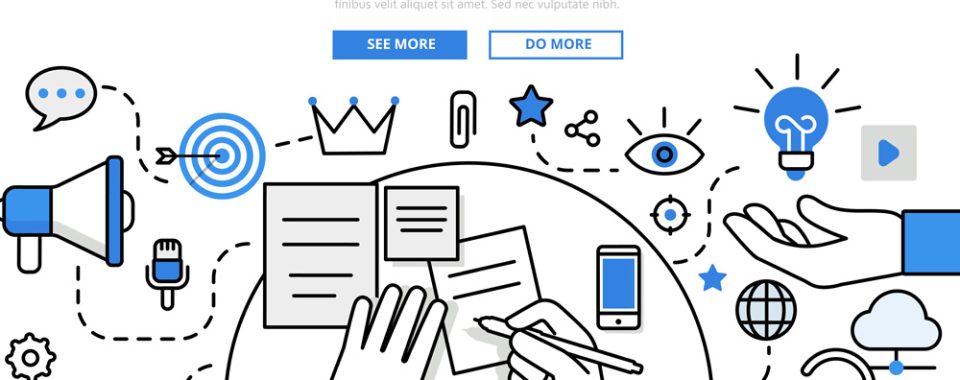
Digital advertising campaigns require constant monitoring and adjustment to ensure effectiveness. But how do you know when to stop a campaign or switch strategies to optimize performance? This is where the concept of “optimal stopping” comes into play. Originating from mathematics and decision theory, optimal stopping helps marketers determine the best point to stop a campaign, analyze its success, and make improvements. For marketing teams, this approach can be a game-changer, leading to smarter budget allocation, increased ROI, and a more strategic approach to campaign management.
What is Optimal Stopping?
Optimal stopping is a decision-making process that helps determine the most advantageous moment to stop a certain activity, given the available data and desired outcome. In marketing, this involves finding the optimal time to halt or adjust a campaign based on performance indicators. It’s a strategy that considers both current performance and potential future gains, allowing marketers to make informed decisions on where to invest resources.
In the context of digital advertising, optimal stopping can help determine whether it’s better to continue a campaign that shows potential or to stop and reallocate budget to more promising initiatives. This approach reduces the risks of overspending on ineffective campaigns and empowers marketers with the ability to optimize on-the-fly.
Why Optimal Stopping Matters for Digital Advertising
Digital advertising budgets are often limited, and each dollar spent should ideally lead to maximum return on investment (ROI). However, not all campaigns perform equally. The ability to stop a campaign at the right time can mean the difference between a positive and a negative ROI. Here are a few reasons why optimal stopping is important in digital advertising:
- Maximizes ROI: By stopping or adjusting a campaign at the right time, you can avoid wasting money on underperforming ads and reallocate resources to higher-performing campaigns.
- Improves Ad Performance: Optimal stopping enables you to evaluate your ads in real-time, making data-driven decisions about which ones are most effective and should continue running.
- Enhances Decision-Making: With optimal stopping, marketers can make well-informed decisions based on historical data and predictive analytics, leading to more strategic campaign management.
Applying Optimal Stopping in Digital Marketing Campaigns
To implement optimal stopping effectively, it’s essential to have a solid grasp of key performance metrics and an understanding of how they influence your campaign goals. Here’s a step-by-step breakdown of how to apply optimal stopping in digital advertising:
1. Define Campaign Goals and KPIs
Before launching any campaign, establish clear objectives and identify the key performance indicators (KPIs) that will measure success. Common KPIs include click-through rate (CTR), conversion rate, cost per acquisition (CPA), and return on ad spend (ROAS). Once you have your KPIs in place, you can track these metrics to evaluate when a campaign is meeting—or failing to meet—your targets.
2. Monitor Campaign Performance Regularly
Optimal stopping requires real-time data analysis, so it’s essential to monitor your campaign’s performance frequently. Use analytics tools to track KPIs and identify trends. By keeping a close eye on performance data, you can detect patterns that indicate whether a campaign is succeeding or struggling. This data-driven approach allows for a quick response, ensuring you don’t waste time or resources on campaigns that aren’t delivering results.
3. Determine a Stopping Threshold
Setting a threshold for when to stop a campaign is a crucial step in applying optimal stopping. This threshold could be based on any number of factors, such as:
- Budget Limit: Once your campaign hits a predetermined spending limit, stop and reassess.
- Performance Milestones: Set milestones that align with your KPIs, such as achieving a specific number of conversions or reaching a target CPA.
- Time-Based Goals: Some campaigns have time-sensitive goals, such as seasonal promotions. Optimal stopping can help determine whether a campaign is worth continuing as it approaches its end date.
4. Analyze and Adjust
Once you reach your stopping threshold, pause the campaign and analyze the results. Look at which ads, keywords, or audience segments performed best, and consider what can be improved. This step allows you to gather insights that can be used to refine future campaigns. Remember, stopping a campaign doesn’t always mean ending it completely—it can also mean making adjustments to improve performance before relaunching.
5. Implement Changes and Relaunch
After analyzing your data, make any necessary adjustments to optimize your campaign. This may involve changing ad creative, reallocating budget to higher-performing keywords, or targeting a different audience segment. By continuously optimizing based on real-time data and applying optimal stopping principles, you can create a cycle of continuous improvement for your digital advertising efforts.
Leveraging Optimal Stopping for Various Campaign Types
Optimal stopping can be applied across a range of digital advertising channels, from paid search to social media and display advertising. Here’s how it can work in different contexts:
- Search Engine Advertising: For paid search campaigns, optimal stopping can be used to test and improve ad copy, keywords, and bidding strategies. For example, if a particular keyword is driving high traffic but not converting, it may be time to pause that ad group and focus on better-performing keywords.
- Social Media Ads: Social media platforms often require quick adjustments based on audience engagement. Optimal stopping helps identify when an ad has reached its peak performance and may benefit from refreshed creative or targeting adjustments.
- Display Ads: In display advertising, optimal stopping is valuable for testing different creatives and placements. Once a certain ad creative’s performance starts to decline, optimal stopping can help determine whether it’s time to switch to a new design or message.
The Role of Marketing Psychology in Optimal Stopping
At Golden Seller Inc., we integrate marketing psychology into our use of optimal stopping. Understanding customer behavior is essential to making effective stopping decisions. By analyzing how audiences interact with ads and identifying emotional triggers, we can optimize campaigns to maximize their impact. For example, if we notice that ads with specific colors or messaging elements perform well, we can use this information to inform future ad creative. This psychology-driven approach allows us to connect with audiences on a deeper level, resulting in more effective and engaging campaigns.
How We Can Help
Golden Seller Inc. specializes in leveraging optimal stopping strategies to enhance digital advertising performance. Our team of experts uses advanced analytics and marketing psychology principles to understand what drives customer engagement, allowing us to make data-driven decisions on when to pause, adjust, or scale campaigns. Whether you’re looking to improve ROI, increase conversion rates, or optimize ad spend, we have the expertise to help you achieve your goals. Contact us today to learn how we can elevate your digital advertising strategy with our unique approach to optimal stopping.








